Have You Considered Needle Stick Injuries?
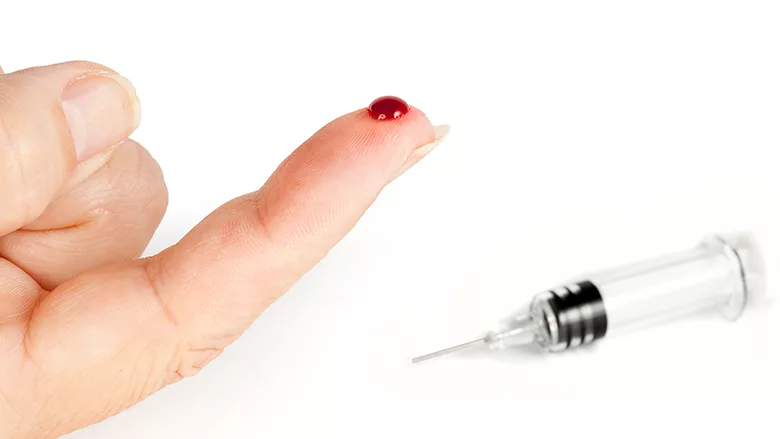
A friend of mine in the Restoration Industry mentioned a recent event they had with an employee getting a puncture wound on a jobsite. A technician was pulling up carpet and felt a stinging sensation on a finger. He realized something had punctured his finger and looked closer. He found a collection of devices (pictured below) that are used for checking blood insulin levels. Apparently one of the devices did not have a cover and that was what punctured his skin.
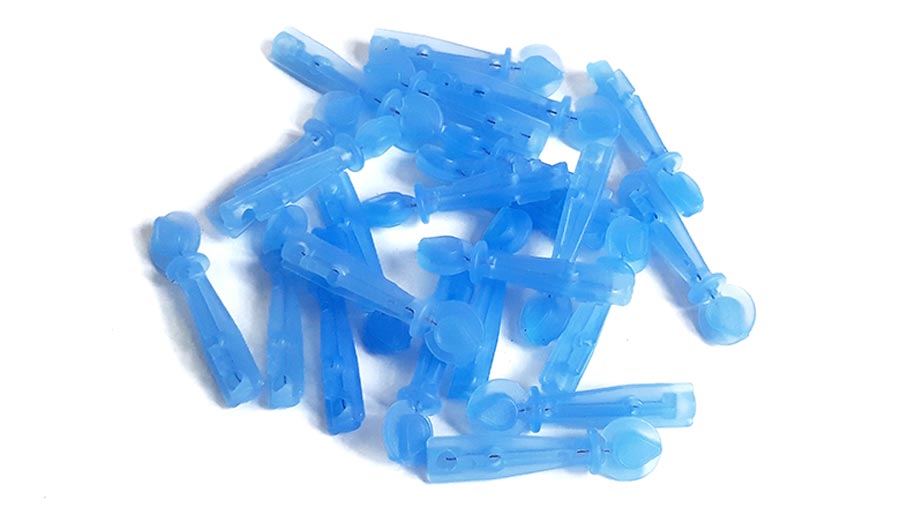
Photo credit: TRI NURYANTO / iStock / Getty Images Plus via Getty Images
I researched the devices and found they are only a few inches long and the needle is about ¼” long. Based on that relatively small size, it’s pretty easy to see how a Restoration Technician might not see one of these devices if they aren’t in plain sight.
Based on this experience and others I have seen over the years, I wanted to provide some awareness of these injuries, discuss OSHA’s expectations, and pass on PPE that I am aware of. I hope you find the following information valuable!
Needlesticks or Sharps Injuries?
I have found that OSHA and the medical industry use the terms needlestick and sharps injury interchangeably. For this article we are talking about both – which result in a puncture wound. However, I’m also going to throw in cuts from scalpels and other devices. Here are some of the devices:
- Syringes and needles used to inject or withdraw
- Lances and other small devices used to test blood
- Scalpels and other cutting devices
- “Other” medical devices that cut/slice/puncture
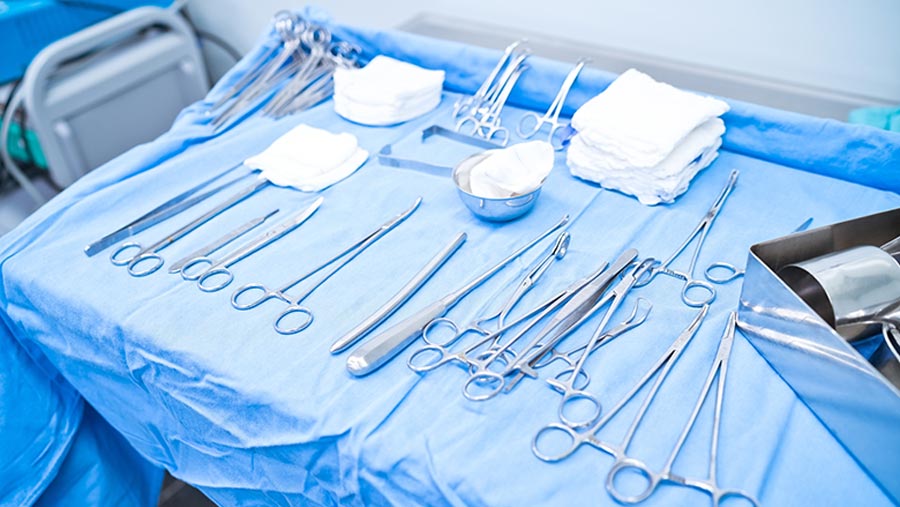
Photo credit: izusek / iStock / Getty Images Plus via Getty Images
Potential Employee Impact
All of these devices have the potential to cut or puncture the skin and if the devices are contaminated, they could allow any of the following to enter a technician’s body:
- Bloodborne Pathogens (BBP)
- Other Potentially Infectious Materials (OPIM’s)
- Unknown drugs or chemicals
Obviously with scalpels, there is the potential for cuts to allow one of the above concerns into the body.
Some of these pathogens/materials could have an immediate negative health effect on the technician (an acute exposure) or they could manifest themselves in a longer-term medical situation (Hepatitis B infections). Regardless of the result, punctures from sharp devices open up an exposure route for these pathogens and materials.
OSHA Expectations
I’ll continue down the path of two potential impacts – cuts and punctures.
Cuts
OSHA has a very basic standard for hand protection that requires employers to select and require employees to use appropriate hand protection. OSHA also wants the performance characteristics to be evaluated relative to the tasks. (1) What does that mean for cuts? That means providing cut-resistant gloves to employees. I would also recommend some basic training and awareness on cut prevention (e.g. cut away from your body, use sharp knives/blades, and consider safety knives with guarded blades).
Punctures
The OSHA standard for hand protection would also apply for punctures. (1) In this application, the use of puncture-resistant or needle stick resistant gloves. Likewise, training and awareness for employees would go a long way in prevention efforts.
BBP Exposure
As mentioned, both cuts and punctures provide a pathway into the body for pathogens, drugs, and other undesirable materials. OSHA has actually put a plan into place for these injuries - the Needlestick Safety and Prevention Act. (2) This Act required OSHA to modify the Bloodborne Pathogen standard (3) to include needlestick or sharps injuries, as well as minimizing exposure to contaminated sharps. (2) Be sure to understand an employer’s responsibilities outlined in the BBP standard if you have a needlestick injury.
I won’t go into detail on the BBP hazards and details, as I have already done that in R&R’s February 2023 and March 2023 issues. In those issues I cover:
- Restoration Industry Exposure to BBP’s
- OSHA BBP Expectations
- Vaccines
- Pathogens Information
Exposure
My friend’s experience reminded me of jobs and situations with needles and sharps exposure I have seen over the years. During work in New York City hospitals after Superstorm Sandy, I saw many rooms with syringes and scalpels left out in the open. In some cases, water had found its way in and around these devices resulting in sharp, rusty items that needed to be disposed of. Another memory was walking between company office buildings in a small town, looking down on the street, and seeing a discarded syringe without a cover on the needle.
However, that was only two situations. I have to admit that I haven’t consistently observed these potential exposure situations on a consistent recurring basis. In fact, my friend’s situation was the first exposure I have heard of in years.
Ultimately, we can’t take a lackadaisical approach to the potential (or lack thereof) for needles and sharps exposure - I believe the risk is too great and exposure will continue to increase for our industry as more hospitals and medical clinics are built.

Photo credit: irin717 / iStock / Getty Images Plus via Getty Images
Awareness
It is certainly possible to encounter needles, syringes, and other sharps almost anywhere. However, I believe educating technicians and giving special awareness to specific buildings and situations can greatly reduce risks. Here are some examples:
- Hospitals and Medical buildings: there are obviously areas in these buildings that will always have the potential for needlestick and sharps injuries.
- Dental Offices: don’t forget that the average dentist can have sharps and dental surgical centers will be even more similar equipment.
- Hotels: guests that legally and illegally use needles, syringes, and sharps will stay at hotels and could not only leave them out but also conceal them in the room.
- Residences: the presence of needles, syringes, and sharps may not be as obvious in a home as compared to a hospital or medical office. However, technicians will need to be observant and pay attention to clues, such as mention of personal medical conditions by the resident or signs of illegal drug use.
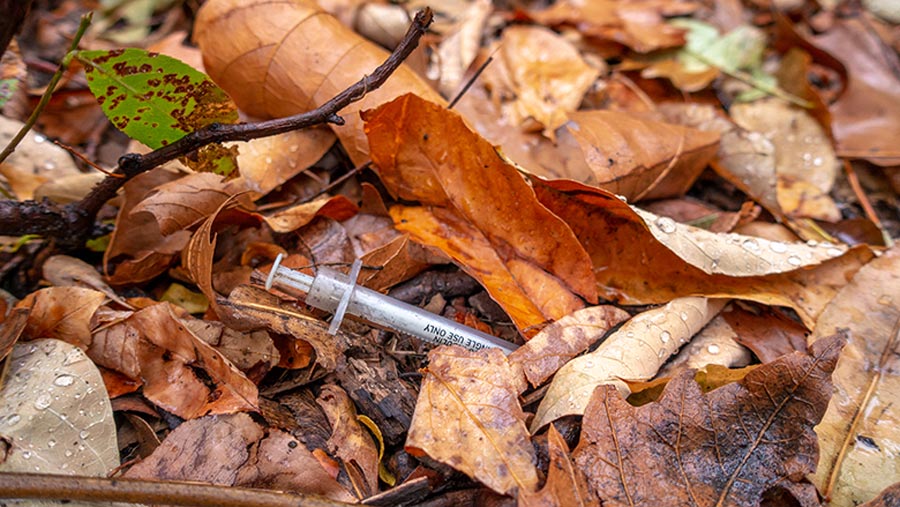
Photo credit: Eloi_Omella / iStock / Getty Images Plus via Getty Images
Prevention
Training
I believe it’s critical that Restoration Companies build needlestick and sharps training into annual BBP training. Depending on the training source and format, that content may or may not already be included. You may have to do an additional review specifically for needlesticks/sharps.
Certification
I am not aware of certification on handling needles, syringes, and sharps for the Restoration Industry. However, BBP training and the IICRC’s Trauma and Crime Scene Tech (TCST) certification will cover many of the hazards I’ve already discussed.
Job Hazard Analysis (JHA)
Ultimately, jobsite hazard awareness and correction of those hazards should be addressed in the JHA. This makes it critical for a supervisor or employee to complete a JHA and identify potential needlestick/sharps hazards on jobs with a high risk of puncture and cut exposure.
PPE/Glove Protection
Advancements in glove protection appear almost every year for cuts, punctures, and needlesticks. Gloves with cut and puncture protection have good dexterity these days. For cut protection, I like gloves with 18-gauge thickness and cut level 3 or 4 protection. Gloves with needlestick protection are thicker and certainly have less dexterity. However, it appears that demands from the law enforcement community has resulted in improvements to glove protection and dexterity over recent years.
I strongly recommend Restoration Companies contact a PPE Supplier (e.g. Aramsco) or glove manufacturer (e.g. Hexarmor or Superior) to discuss the options and protection levels.
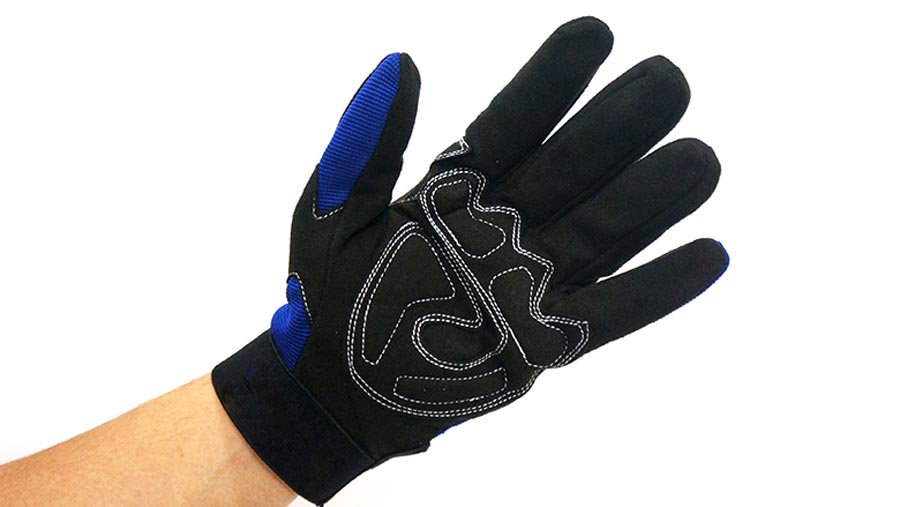
Photo credit: Nur Fandilah / iStock / Getty Images Plus via Getty Images
Needle/Sharps Waste
Needles, syringes, and other sharps can be easily contained and disposed of in a sharps container. The Restorer should be aware of handling and disposal requirements for their state, county, or city. I recommend contacting a local waste contractor for specific information and containers.
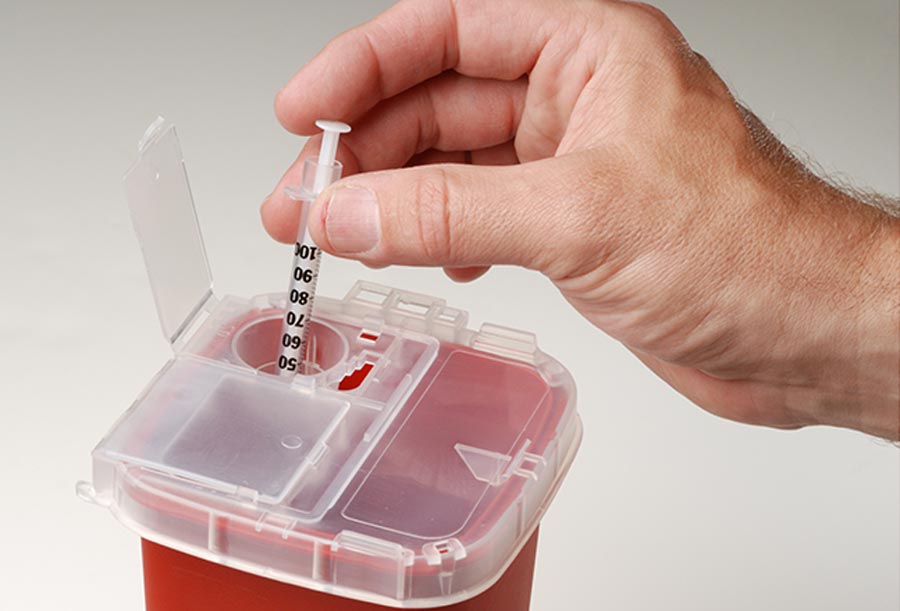
Photo credit: sshepard / iStock / Getty Images Plus via Getty Images
Summary
Needlestick injuries and exposure for the Restoration Industry are nowhere near as frequent as employees working in the medical field. However, our work does take us into situations where there is an exposure risk. Unfortunately, some of the highest restoration risks come from unknown and unseen needles, syringes, and sharps. Based on this, I recommend educating techs to raise awareness, provide them with training and BBP certification, and provide protective gloves.
Resources
Occupational Safety and Health Administration, Quick Reference Guide to the Bloodborne Pathogen Standard. https://www.osha.gov/bloodborne-pathogens/quick-reference
MDS Associates, Drive Compliance. Stop Needlesticks with Puncture-Resistant Work Gloves. https://www.mdsassociates.com/puncture-resistant/work-gloves?utm_campaign=&utm_source=GoogleCPC&utm_medium=&gad_source=1&gclid=CjwKCAiA9dGqBhAqEiwAmRpTCwp25nzVYeqWlhubwdMST28Nm-i-0WefKs80EFYiHPdlSM8raSnFWxoCWQcQAvD_BwE
Magid Glove & Safety Manufacturing Company, Better Puncture-Resistant Gloves For Industrial Workers. https://www.magidglove.com/safety-matters/choosing-and-using-ppe/puncture-resistant-gloves
References
- Occupational Safety and Health Administration, 1910 Subpart I, Personal Protective Equipment, Hand Protection 1910.138. https://www.osha.gov/laws-regs/regulations/standardnumber/1910/1910.138
- Occupational Safety and Health Administration, Standard Interpretations, Needlestick Safety and Prevention Act, February 20, 2003. https://www.osha.gov/laws-regs/standardinterpretations/2003-02-20#:~:text=The%20Needlestick%20Safety%20and%20Prevention%20Act%20(NSPA)%20was%20signed%20into,specific%20additional%20definitions%20and%20requirements.
- Occupational Safety and Health Administration, 1910, Bloodborne pathogens, 1910.1030. https://www.osha.gov/laws-regs/regulations/standardnumber/1910/1910.1030
Looking for a reprint of this article?
From high-res PDFs to custom plaques, order your copy today!









